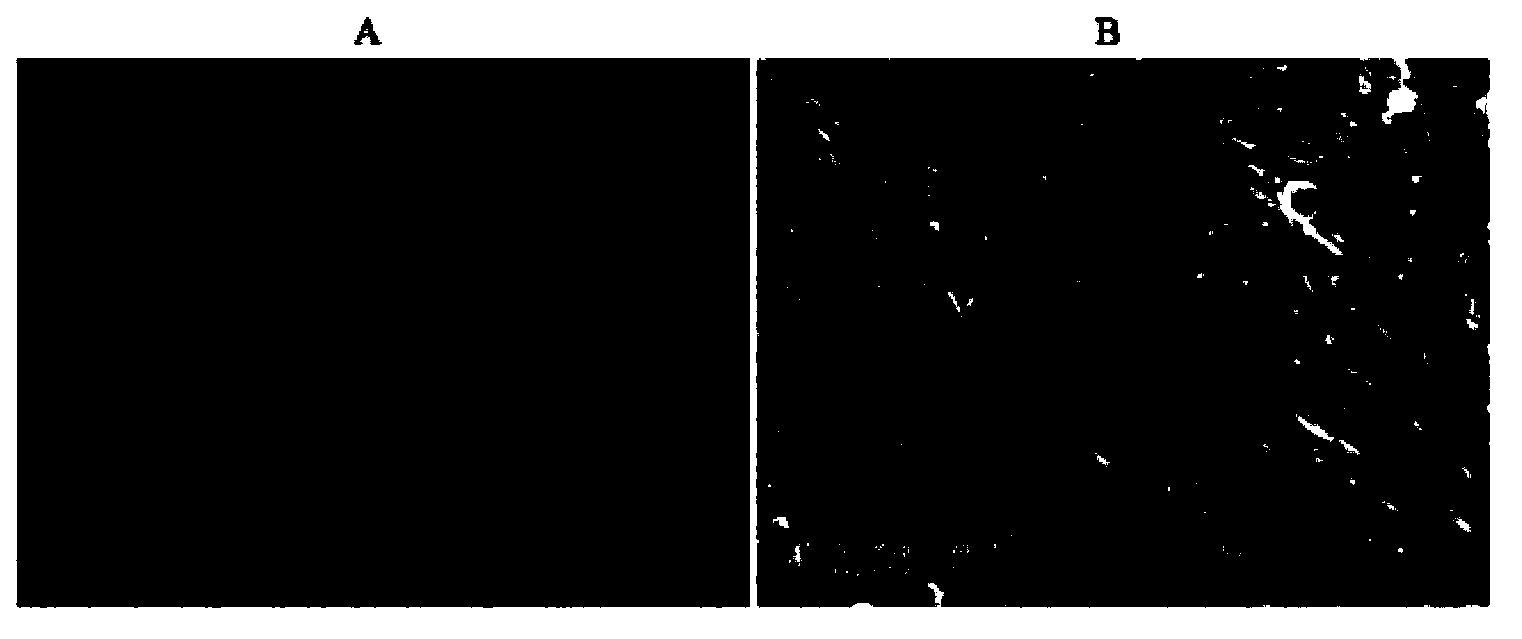Organ-type artificial skin as well as preparation method and application thereof
A technology of artificial skin and organs, applied in skin transplantation, medical science, prosthesis, etc., can solve problems such as limited self-renewal ability, cell cycle entering terminal differentiation, and difficulty in exerting synergistic effects of various cells to achieve good cell active effect
- Summary
- Abstract
- Description
- Claims
- Application Information
AI Technical Summary
Problems solved by technology
Method used
Image
Examples
Embodiment 1
[0045] Example 1 Construction of artificial skin
[0046] 1. Materials
[0047] Keratinocytes and fibroblasts were obtained from normal skin after circumcision of children, and amnion was obtained from the placenta of healthy parturients, and frozen after decellularization for future use. BD Matrigel TM BasementMembrane Matrix was obtained from BD Biosciences and human placental collagen type IV was obtained from Sigma.
[0048] 2. Method
[0049] 1) Culture method of human dermal fibroblasts
[0050] After the epidermis was torn off from the dermis, the dermis was washed 3-5 times with PBS containing antibiotics. Use ophthalmic scissors to cut the dermal tissue into a paste, and use ophthalmic forceps to take about 0.5mm of it 3 Tissues of large size were inoculated in a 10cm culture dish, and the interval between each tissue block was about 10mm. The dish was placed upside down in a 37°C incubator for 1 hour. After the tissue block was firmly attached to the bottom of ...
Embodiment 2
[0056] Example 2 Expression of normal skin-specific proteins in the organotypic artificial skin of the present invention
[0057] As a result of immunohistochemical testing, it was found that the organotypic artificial skin prepared in Example 1 expressed the corresponding protein markers of normal human skin, including involucrin (mantle protein) in the stratum corneum, CK10 in the spinous layer, CK14 in the basal layer, and vimentin in the dermis ( Vimentin) and CK19 of basal epidermal stem cells ( Figure 4A -E). Among them, the stratification of the epidermis and dermis is clear, the distribution of proteins in each layer is basically the same, and the epidermal stem cells are located in the position of the epidermis close to the basal layer. The positive cells of mantle protein and CK10 were less than those of normal skin, suggesting that this program can be further optimized to achieve better results.
Embodiment 3
[0058] The cell viability assay of embodiment 3 skin
[0059] The results of trypan blue staining to detect cell viability show that the fibroblasts and keratinocytes grown in the organotypic artificial skin prepared in Example 1 can maintain good cell viability, and the number of viable cells reaches 98% ( Figure 5 ).
PUM
| Property | Measurement | Unit |
|---|---|---|
| Thickness | aaaaa | aaaaa |
Abstract
Description
Claims
Application Information
 Login to View More
Login to View More - R&D
- Intellectual Property
- Life Sciences
- Materials
- Tech Scout
- Unparalleled Data Quality
- Higher Quality Content
- 60% Fewer Hallucinations
Browse by: Latest US Patents, China's latest patents, Technical Efficacy Thesaurus, Application Domain, Technology Topic, Popular Technical Reports.
© 2025 PatSnap. All rights reserved.Legal|Privacy policy|Modern Slavery Act Transparency Statement|Sitemap|About US| Contact US: help@patsnap.com



